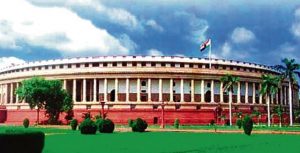Daily Current Affairs for Government Exams:
Today Current Affairs: 11th September 2020 for UPSC IAS exams, State PSC exams, SSC CGL, State SSC, RRB, Railways, Banking Exam & IBPS, etc
Table of Contents
Contents:
- Global Innovation Index 2020
- Ease of Doing Business Rankings :
- Punnapra-Vayalar revolt:
- Breach of legislature’s privilege
- Other important current affairs:
1.Global Innovation Index 2020 :

The Global Innovation Index 2020 was released by the World Intellectual Property Organisation (WIPO).
- India is at the 48th position in the list of top 50 innovative countries.
- India occupied the 52nd position in the 2019 rankings.
Key Points
- Switzerland, Sweden, the USA, the UK, and the Netherlands are the top five countries.
- With a group of Asian economies advancing up the rankings, the index indicates that “a gradual eastward shift in the locus of innovation” is underway.
- In Asian economies, China, India, the Philippines, and Vietnam have made the most progress on the index in recent years, with all four now among the top 50.
- India is one of the leading innovation achievers in the central and southern Asian region, as it has shown a consistent improvement in its innovation ranking for the last 5 years.
- China, which is the only middle-income economy among the top 30, now holds the 14th position.
Highlights of India:
- India has become the third most innovative lower-middle-income economy in the world.
- India ranks in the top 15 in indicators such as the Information and Communication Technology (ICT) services exports, government online services, graduates in science and engineering, and Research and Development-intensive global companies.
- India improved the most in three pillars: Institutions (61st), business sophistication (55th), and creative outputs (64th).
Global Innovation Index
- It provides detailed metrics about the innovation performance of 131 countries and economies around the world.
- Its 80 indicators explore a broad vision of innovation, including political environment, education, infrastructure, and business sophistication.
- It is published annually by Cornell University, INSEAD, and the WIPO.
2.Ease of Doing Business Rankings :

The Department for Promotion of Industry and Internal Trade (DPIIT), Ministry of Commerce and Industry released the 4th edition of Ease of Doing Business Rankings based on the State Business Reform Action Plan (State BRAP).
- Andhra Pradesh has topped the rankings followed by Uttar Pradesh, Telangana, Madhya Pradesh, and Jharkhand. Tripura, Sikkim, Odisha were among the worst performers.
- Andhra Pradesh has achieved 100% compliance with BRAP.
- It is the first State to take measures to revive the economy hit by the global pandemic and revive the small and medium scale industries with a ReSTART package.
- The ReSTART package includes the payment of sanctioned incentives, working capital loans, preferential market access, etc. to MSME units.
Ease of Doing Business (EODB) :
- It is a joint initiative by the Department for Promotion of Industry and Internal Trade (DPIIT) and the World Bank to improve the overall business environment in the States.
- Ranking of all the States and Union Territories is done, based on the implementation of BRAP by them.
Business Reform Action Plan (BRAP):
- It was launched in 2015.
- BRAP 2019 contains a list of 80 reforms (187 reform action points) to be implemented by 19 State departments.
- These reforms cover 12 business regulatory areas such as Access to Information, Single Window System, Labour, Environment, etc.
- It was introduced to encourage healthy competition between states.
- This would help in attracting investments and increasing the Ease of Doing Business in each State.
3.Punnapra-Vayalar revolt::

A report to the Indian Council for Historical Research (ICHR) has suggested dropping the Communist martyrs of Punnapra-Vayalar, Karivelloor, and Kavumbayi agitations from the list of martyrs of India’s Independence struggle.
ICHR says these Communist agitations cannot be counted as the part of the Independence movement as they took place after the interim government led by Jawaharlal Nehru assumed office.
These riots were basically against the interim government.
Punnapara-Vayalar revolt:
- It was an organized working class uprising in the Princely State of Travancore, British India against the Prime Minister, C. P. Ramaswami Iyer, and the state.
- The objectives of the revolt were:
- To overthrow the exploitative diwan of Travancore.
- To liberate the working class from unjust taxation and exploitation of the establishment.
- The significances of this revolt were:
- It was a unique agitation where the working class rose against the government.
- It saw the people of all classes up in arms against a common tyrant hence it dissolved class and religion distinction and induced unity among people.
- It resulted in establishing democracy in the region and also gave a decisive turn to the politics of the state
- Implications of the revolt:
- Historians maintain this was a proper struggle against the declaration of ‘Independent Travancore’ by the then Travancore.
- T K Varghese Vaidyan, a leader of the struggle, had gone on record saying it was a rehearsal for a larger revolution with the ultimate objective of establishing a “Communist India”.
4. Breach of legislature’s privilege:

This week, the Houses in Maharashtra moved motions of breach of privilege against Arnab Goswami and Kangana Ranaut.
The privileges:
- Parliamentary privilege refers to the right and immunity enjoyed by legislatures, in which legislators are granted protection against civil or criminal liability for actions done or statements made in the course of their legislative duties.
- The powers, privileges, and immunities of either House of the Indian Parliament and of its Members and committees are laid down in Article 105 of the Constitution.
- Article 194 deals with the powers, privileges, and immunities of the State Legislatures, their Members, and their committees.
- Generally, any act that obstructs or impedes either House of the state legislature in performing its functions, or which obstructs or impedes any Member or officer of such House in the discharge of his duty, or has a tendency, directly or indirectly, to produce such results is treated as a breach of privilege.
- It is a breach of privilege and contempt of the House to make speeches or to print or publish libel reflecting on the character or proceedings of the House or its Committees or on any member of the House for or relating to his character or conduct as a legislator.
Procedure to be followed in cases of an alleged breach of the legislature’s privilege:
- The Legislative Assembly Speaker or Legislative Council Chairman constitutes a Privileges Committee consisting of 15 members in the Assembly and 11 members in the Council.
- The members of the committee are nominated based on the party strength in the Houses.
Speaker or Chairman first decides on the motions. - If the privilege and contempt are found prima facie, then the Speaker or Chairman will forward it to the Privileges Committee by following the due procedure.
- The Committee will examine whether statements made by him had insulted the state legislature and its Members and whether their image was maligned before the public.
- The Committee, which has quasi-judicial powers, will seek an explanation from all the concerned, will conduct an inquiry, and will make a recommendation based on the findings to the state legislature for its consideration.
If the Committee finds the offender guilty of breach of privilege and contempt, it can recommend the punishment.
- The punishment can include communicating the displeasure of the state legislature to the offender, summoning the offender before the House and giving a warning, and even sending the offender to jail.
- In the case of the media, press facilities of the state legislature may be withdrawn, and a public apology may be sought.
Other important current affairs:
1.The Union Ministry of Shipping launched ‘SAROD-Ports’ (Society for Affordable Redressal of Disputes – Ports) through a virtual ceremony in New Delhi.
- It is established under the Societies Registration Act, 1860.
- ‘SAROD-Ports’ is similar to provision available in the Highway Sector in the form of SAROD-Roads constituted by the National Highways Authority of India (NHAI).
- It consists of members from the Indian Ports Association (IPA) and Indian Private Ports and Terminals Association (IPTTA).
- SAROD-Ports will advise and assist in settlement of disputes through arbitrations in the maritime sector, including ports and shipping sector in Major Port Trusts, Non-major Ports, including private ports, jetties, terminals and harbours.
- It will also cover disputes between:
- Granting authority and Licensee/Concessionaire /Contractor.
- Also, disputes between Licensee/Concessionaire and their contractors arising out of and during the course of execution of various contracts.
2. Scientists at the Aryabhatta Research Institute of Observational Sciences (ARIES), Nainital (Uttarakhand) have evaluated the near-surface ozone in the Brahmaputra River valley (BRV).
- ARIES is an autonomous research institute under the Department of Science and Technology (DST), Government of India.
- Scientists analysed the variability of ozone (O3) and other air pollutants over the BRV region.They assessed seasonal characteristics of ozone to identify the emission source of ozone and its precursors, especially methane (CH4) and non-methane hydrocarbons (NMHCs).
- NMHCs such as ethane, ethene, propane, propene, etc. play an important role in controlling ozone concentrations.
- They also studied the relationships between meteorological parameters like air temperature, wind speed, solar radiation, soil temperature, rainfall, etc. and ozone in a tropical setting.
- Scientists have found a relatively low concentration of ozone over BRV (Guwahati – Assam) compared to the other urban locations in India.
- The pattern of O3 concentrations in the BRV indicated that it was strongly influenced by local oxides of nitrogen (NOx) sources with an adjacent national highway being the likely major source.
- The mean ventilation coefficient was greater than 6000 m2s during the day in the pre-monsoon season indicating pollutant dispersion.
3. Women Self Help Groups (SHGs) under the Start-Up Village Entrepreneurship Programme (SVEP) stepped up as effective frontline responders and reached the last mile ensuring an immediate relief to the rural communities and the most vulnerable population during the ongoing Covid-19 pandemic.
- SVEP is a sub-scheme of the Deendayal Antyodaya Yojana-National Rural Livelihood Mission (DAY-NRLM), Ministry of Rural Development and has been implemented since 2016.
- It has extended business support services and capital infusion to 153 blocks of 23 states as of August 2020.
- Entrepreneurship Development Institute of India (EDII), Ahmedabad is the technical support partner of SVEP.
- EDII is an autonomous and not-for-profit institute, set up in 1983.
- It is sponsored by apex financial institutions like IDBI Bank Ltd., IFCI Ltd., ICICI Bank Ltd. and the State Bank of India (SBI).
- It has been assigned the task of setting up Entrepreneurship Development Centers in Cambodia, Myanmar, Vietnam, Uzbekistan, etc. by the Ministry of External Affairs.
4. The Department of Posts (Ministry of Communications) has launched a scheme called Five Star Villages. The scheme seeks to bridge the gaps in public awareness and reach of postal products and services, especially in interior villages.
- Objective: To ensure universal coverage of flagship postal schemes in rural areas of the country.
Features: - Three components: Product and Service Availability, Product and Service Publicity, and Product and Service Marketing.
- One-Stop Centre: Branch offices will function as one-stop shops to cater to all post office-related needs of the villagers.
- Schemes covered:
- Savings Bank accounts, Recurring Deposit Accounts, NSC/KVP certificates,
- Sukanya Samridhi Accounts/ PPF Accounts,
- Funded Post Office Savings Account linked India Post Payments Bank Accounts,
- Postal Life Insurance Policy/Rural Postal Life Insurance Policy and
- Pradhan Mantri Suraksha Bima Yojana Account/Pradhan Mantri Jeevan Jyoti Bima Yojana Account.
- Rating System: One Scheme is equal to one star of rating. Therefore, if a village attains universal coverage for four schemes from the above list, then that village gets four-star status and so on.
- A Pilot Implementation: The scheme is being launched on pilot basis in Maharashtra; based on the experience here, it will be implemented nation-wide.
5. The Punjab Energy Development Agency (PEDA) in association with the Govt. of Punjab, is creating alternatives for paddy stubble utilization.
- This includes setting up biomass power plants and producing Bio CNG from the paddy stubble biomass.
Punjab Energy Development Agency was formed in Sept. 1991 as a state nodal agency for promotion and development of renewable energy programmes/projects and energy conservation programme in the state of Punjab. - PEDA is registered as a Society under the Societies Act of 1860.
- Biomass Power Plants: PEDA has set up 11 biomass power plants where 97.50 mega watts (MW) of power is generated.
- In these plants, 8.80 lakh metric tonnes of paddy stubble is used annually to generate power.
- Bio CNG: Eight projects of Bio CNG are under execution in the state. These will need around 3-lakh metric tonnes of paddy stubble annually.
- India’s largest Bio CNG project, which will produce 8,000 m cube biogas per day (equivalent to 33.23 tonnes of Bio CNG per day) is under execution at Lehragaga tehsil in Sangrur district. The project is expected to be commissioned by March 2021.
- Bioethanol Project: A Bioethanol project of 100 kilolitres is being set up at Talwandi Sabo in Bathinda. This will require 2 lakh metric tonnes of paddy stubble annually.
- Bioethanol can be used to run vehicles after blending with diesel and petrol.
6.Sri Viswanatha Satyanarayana:
- 125th birth anniversary celebrations of Sri Viswanatha Satyanarayana:He is the first writer to impart a true Teluguness to the Ramayana.
- Ramayana Kalpavruksham, the seminal work of Shri Viswanatha had fetched him the prestigious Jnanpith Award.
- Through his works, he had highlighted the importance of imparting learning in the mother tongue, preserving culture, and protecting nature.
- Viswanatha’s literary canvas was large comprising novels, critical works, poems, epics, plays, songs and verses, among others.
7. Vice Admiral SR Sarma of the Indian Navy laid the keel of the third ship (Yard- 12653) of the prestigious P17A class stealth frigates on 10 Sep 2020.
- Seven frigates under the P17A series will be constructed of which four are being constructed in MDL and three in GRSE with MDL as the lead yard.
- The P17A class frigates are being built using indigenously developed steel and fitted with weapons and sensors along with the Integrated Platform Management System.
- These ships are having stealth features.
- Construction of P17A ships differs in the very concept of warship building by way of adoption of the modern technology ‘Integrated Construction (IC)’ where the blocks are pre-outfitted before joining to reduce the build period of warships.
- When commissioned the platforms will enhance the combat capability of the Indian Naval fleet.
8. According to a UNICEF report, India’s child mortality rate has declined substantially between 1990 and 2019.
- According to the new mortality estimates released by UNICEF, the WHO, the Population Division of the United Nations Department of Economic and Social Affairs, and the World Bank Group, the under-five mortality rate (deaths per 1,000 live births) in India declined to 34 in 2019 from 126 in 1990.
- The country registered a 4.5 percent annual rate of reduction in under-five mortality between 1990-2019.
- The number of under-five deaths in India dropped from 3.4 million in 1990 to 824,000 in 2019.
- The infant mortality rate (deaths per 1,000 live births) in India declined from 89 in 1990 to 28 last year.




